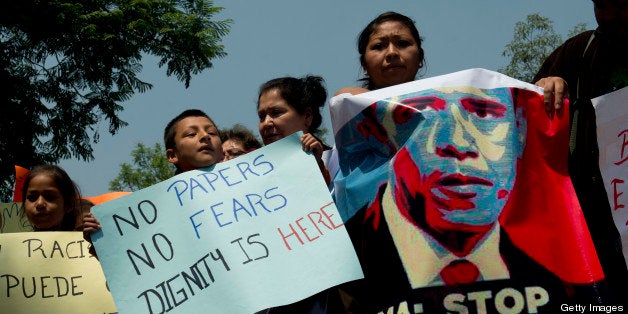
An immigration reform package is on its way to the U.S. Senate floor after clearing the Judiciary Committee. The committee's work on the bill was almost entirely designed to make it more palatable to conservatives -- expanding a proto-national ID program and throwing more funds at "border security," most notably -- and thereby get the required 60 votes in the full Senate.
In short, what was necessary to improve the bill's political fortunes harmed its substance.
The biggest flaw in the bill is "E-Verify," a national electronic employment verification system that checks identity information of job applicants against government databases. E-Verify is in theory supposed to keep unlawful immigrants out of the labor market. But in reality, not only will it fail to keep people out, it will also hinder job creation with expensive new regulations.
Error rates reported by government and private audits of E-Verify are extraordinarily high. E-Verify mistakenly approves a majority of unlawful immigrant job applicants and, worse, misidentifies about one percent of American applicants as unlawful. That opens up another legal odyssey for many Americans who should not have to ask permission from the federal government to work. The Judiciary Committee did approve an amendment that would decrease the punishments for failure to use E-Verify, but it remains largely intact.
The extra money in the bill for border protection is largely a waste. Recent history proves decisively that border security alone will not solve unauthorized immigration.
Ronald Reagan's immigration amnesty in 1986 dramatically beefed up immigration enforcement and it has only increased under the current administration. It didn't work; since 1986 a net 11.5 million unauthorized immigrants are living in the United States.
The Obama Administration vigorously prosecutes immigration violations, deporting approximately 400,000 illegals annually -- a 31 percent increase over the Bush years. And yet, the unlawful immigrant population has increased by almost 700,000 since 2009.
All of the security in the world cannot separate willing migrant workers from economic opportunity. That's why the Committee should have spent more time on improving the guest worker visa program. A large and flexible guest worker program is the only way to make border security more effective -- by channeling immigrants into the legal market.
Unfortunately, the Committee didn't do much to improve lower-skilled guest worker visas. The W-visa, as it is called, begins at a pitifully small 20,000 per year. To put that in perspective, 650,000 unlawful immigrants successfully entered the U.S. every year between 2005 and 2007, mostly to work in the booming housing market. Over five years, if a new government agency says the economy needs the workers, up to 200,000 guest workers a year could be let in for lower-skilled non-agricultural work. That's still not enough. The Committee actually improved the bureaucratic process but didn't increase the numbers.
In fact, an amendment added to the bill actually makes a guest visa program more important for immigration reform. Under the Committee-passed version, in order to legalize the unlawful immigrants here, 90 percent of all border crossers must be apprehended. Today, only about half of them are caught. A 90 percent apprehension rate can only be achieved if a guest worker visa program encourages most would-be unlawful border crossers into crossing legally.
To legalize the unlawful immigrants here and achieve a 90 percent apprehension rate, the W-visa numbers must be increased dramatically. If that does not happen, unlawful immigrants here will not be legalized. Traditional supporters of legalization who also oppose guest workers, like labor unions, need to confront that contradiction.
There is no doubt that the immigration bill is in a stronger political position now than when it entered committee. Unfortunately it gained that strength by spending money on unnecessary enforcement and avoiding attempts to increase the essential W-visa guest worker program.
